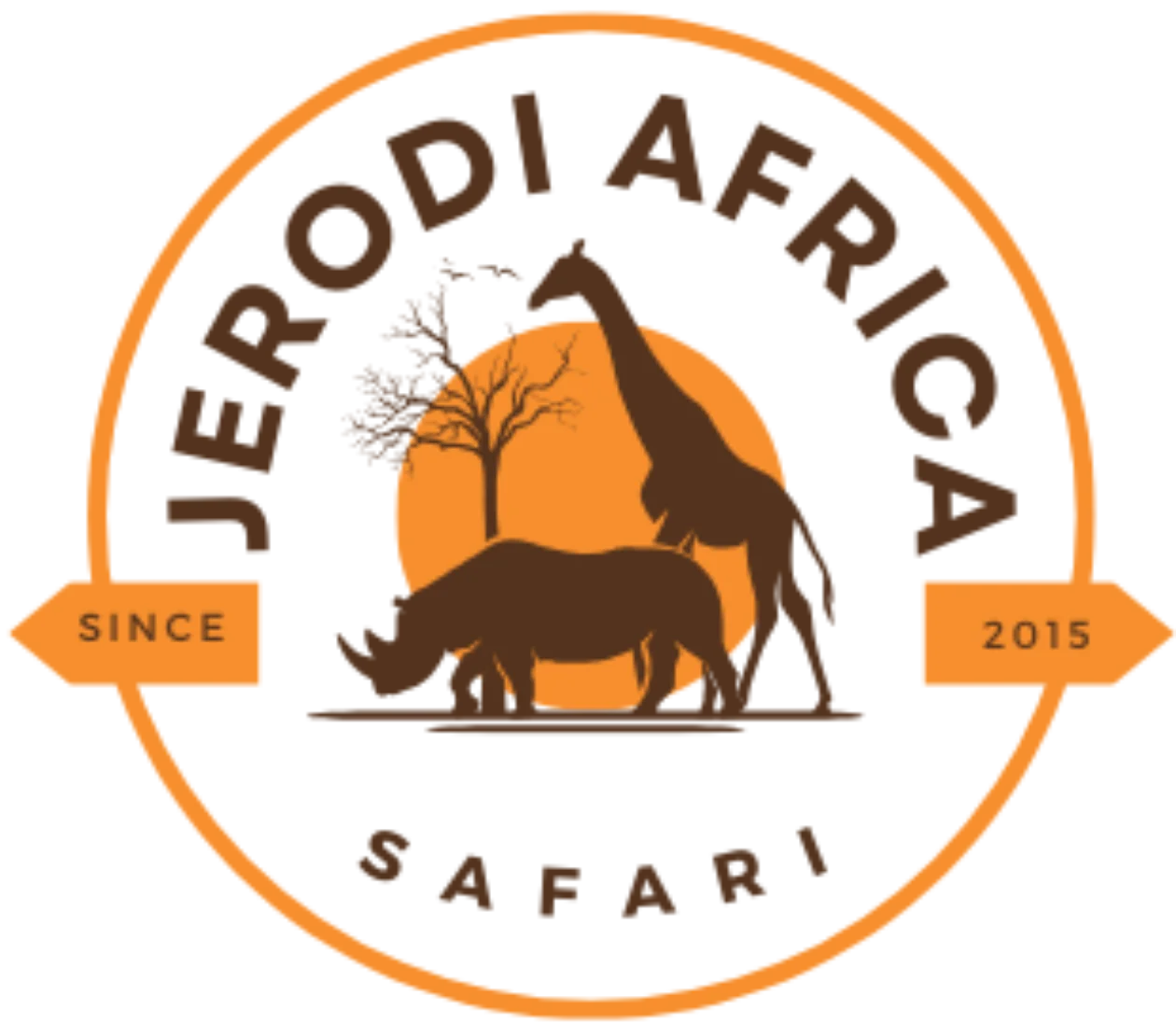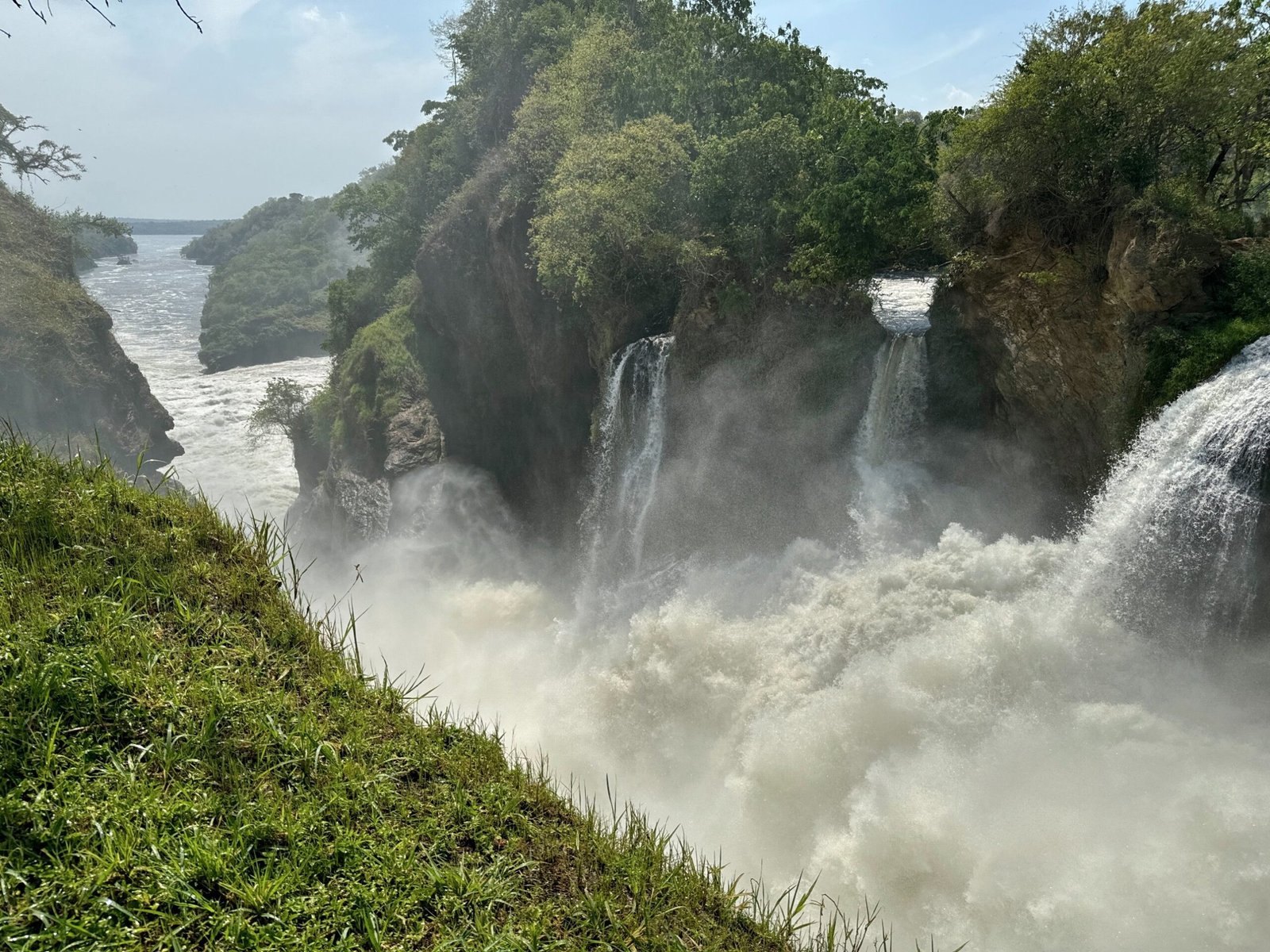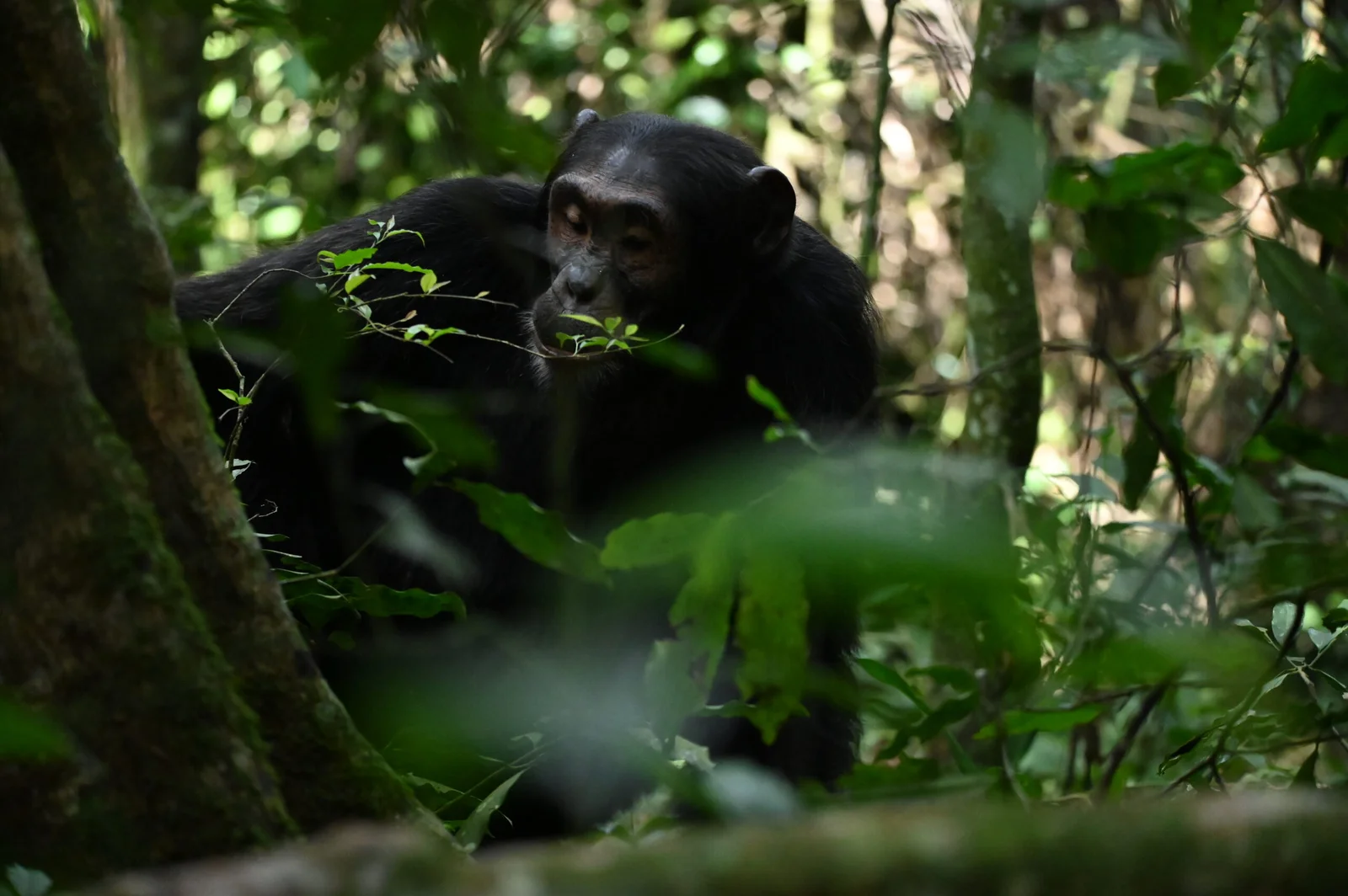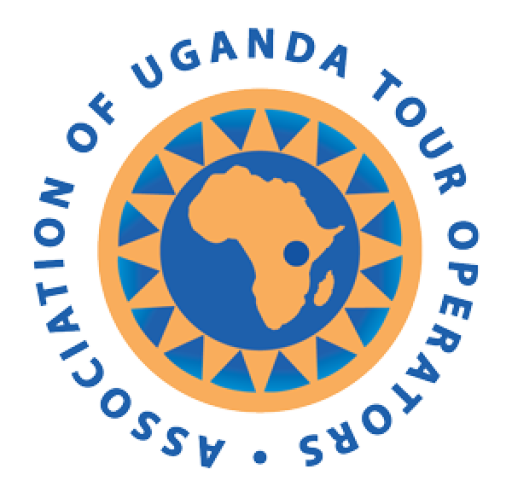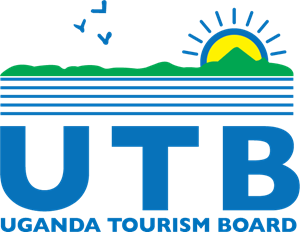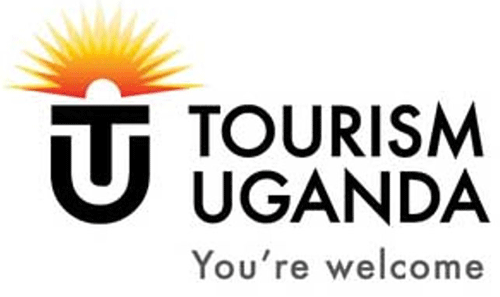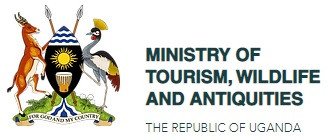Bwindi Impenetrable Forest National Park:
A Haven for Mountain Gorillas
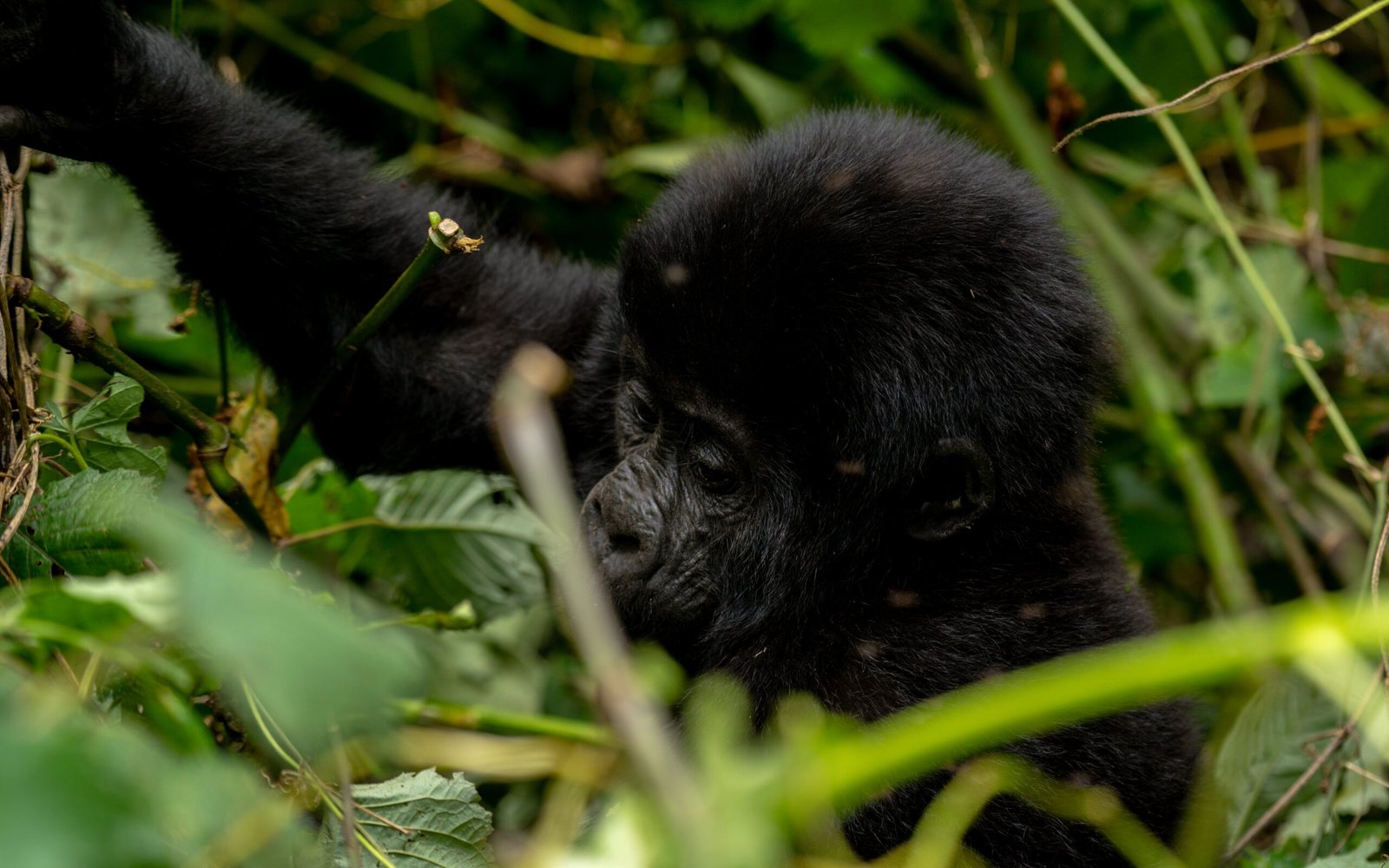
Located in the picturesque southwestern region of Uganda, Bwindi Impenetrable Forest National Park stands as a UNESCO World Heritage Site and one of the most biodiverse places on Earth. This ancient forest is a haven for wildlife enthusiasts and nature lovers, boasting an incredible array of flora and fauna. The park is home to approximately 400 mountain gorillas, about half of the world’s population, making it a premier destination for gorilla trekking and a must-visit for anyone passionate about wildlife conservation.
Uganda vs Rwanda: Where Is the Best Place to See Mountain Gorillas?
If you’re debating where to embark on an unforgettable mountain gorilla trek, both Uganda and Rwanda present outstanding opportunities. Each country shelters these gentle primates in their misty, ancient forests, but there are a few notable differences that might help you choose.
Comparing the Experiences
- Wildlife Diversity: Uganda stands out for its rich wildlife offerings beyond gorilla trekking. For those wishing to pair their gorilla experience with other adventures, you can explore dramatic waterfalls at Murchison Falls National Park or trek to see chimps and other primates in Kibale Forest.
- Permit Costs: The price of a gorilla trekking permit is a considerable factor for many travelers. In Uganda, permits are roughly $800 per person, while Rwanda’s permits are priced at around $1500 per person. Both grants you the cherished privilege of spending one magical hour in the presence of a gorilla family, with groups limited to 8 visitors to protect the gorillas and minimize human impact.
- Conservation Impact: It’s worth remembering that these permit fees do much more than open the forest gates. Your contribution directly supports the ongoing protection of mountain gorillas and the preservation of their fragile habitat.
Making Your Choice
While Rwanda’s Volcanoes National Park is famous for easy access and shorter travel times from the capital, Uganda’s Bwindi Impenetrable Forest offers remarkable biodiversity and a more cost-effective permit, making it a leading choice for many nature enthusiasts.
Regardless of your decision, witnessing mountain gorillas in the wild is a privilege held by just 80 visitors each day, ensuring this extraordinary encounter remains intimate and sustainable.
Paul Matschie’s Role in Mountain Gorilla Discovery
The story of mountain gorilla conservation can be traced back to 1903, when German zoologist Paul Matschie made a groundbreaking scientific contribution. He was the first to formally describe and classify the mountain gorilla as its own unique subspecies, establishing the groundwork for future research and protection. Using specimens gathered from the misty Virunga Mountains, Matschie distinguished the mountain gorilla—now known as Gorilla beringei beringei—from its relatives, setting the stage for a new era of primate study and conservation efforts.
Gorilla Habitats: Where Can You See Gorillas in Africa?
While many travelers dream of encountering gorillas on safari, it’s important to know where these remarkable creatures call home. Gorillas are native to a few specific regions in Africa, with their populations divided primarily into two groups: mountain gorillas and lowland gorillas.
For those eager to see mountain gorillas up close, Uganda and Rwanda are the leading destinations. Bwindi Impenetrable Forest National Park is particularly famous for its population, with Rwanda’s Volcanoes National Park also offering excellent trekking experiences. The Democratic Republic of the Congo (DRC) is another place where both mountain and lowland gorillas reside. However, due to ongoing challenges in some areas, access may be restricted.
If your travels take you to Tanzania, Kenya, or South Africa, it’s worth noting that these countries do not have wild gorilla populations. While Tanzania and Kenya offer unforgettable wildlife spectacles—such as the annual wildebeest migration in the Serengeti and Maasai Mara—gorilla trekking is not available there. South Africa is known for its own unique wildlife, but gorillas are not among them.
For a comprehensive East African adventure, many visitors combine a gorilla trek in Uganda or Rwanda with classic safaris in Tanzania or Kenya, experiencing the best of both worlds and a true celebration of Africa’s biodiversity.
The park’s unique geography and climate create a perfect blend of habitats, supporting a wide range of plant and animal species. From the towering trees and vines to the vibrant birdlife and majestic mountain gorillas, Bwindi Impenetrable Forest National Park is a true marvel of nature. Visitors can experience the thrill of gorilla trekking, observe these gentle giants in their natural habitat, and contribute to the conservation efforts that protect this incredible ecosystem.
The Feeding Habits of Mountain Gorillas
One of the most fascinating aspects of mountain gorillas is the way they eat and move through their forest home. Unlike the often elusive big cats or swift-footed antelopes, mountain gorillas live life at a leisurely—almost contemplative—pace, spending much of their day foraging and feeding.
The Daily Life of a Mountain Gorilla
So, what does a typical day look like for a mountain gorilla in Bwindi’s misty embrace? These gentle giants rise with the sun, beginning their activities around 6 a.m. Their days are spent foraging for a leafy breakfast, enjoying playtime among family, and ambling through the forest in search of more meals—taking full advantage of Bwindi’s never-ending buffet of fruits, shoots, and roots.
Around midday, much like us after a hearty lunch, they settle in for a well-deserved siesta. The forest floor transforms into a network of leafy nests, expertly crafted from twigs and leaves—a testament to their botanical building skills. Surprisingly, these gorilla beds are not only functional but reportedly quite comfortable, designed for proper gorilla relaxation.
As dusk approaches, the family groups gather once more to construct fresh nests in new locations each evening. With daylight fading (Uganda’s sunsets are swift and predictable), the gorillas tuck in for the night, their nests woven securely in the shadows of centuries-old trees.
<Bwindi’s famous residents>sustain themselves on a largely vegetarian menu, feasting on a diverse buffet that includes leaves, shoots, roots, fruit, stems, and the occasional flower. During certain seasons, bamboo shoots become a prized delicacy. An adult gorilla can consume a whopping 75 pounds of vegetation in a single day—a true testament to both their size and the richness of their habitat.
Gorillas in Bwindi and neighboring Mgahinga Gorilla Park begin their day at sunrise. They roam throughout the forest, using their keen sense of smell and memory to locate fresh feeding grounds. Every day, each family group forages in a slightly different area, uncovering new patches of greenery and enticing fruits. After a busy morning nibbling and socializing, the gorillas enjoy a midday rest—essentially a siesta—before resuming their quest for food.
At sunset, just as the Ugandan skies begin to darken, these gentle giants gather materials like twigs and leaves to build cozy nests for the night. Although perhaps not as plush as the bedding at a luxury lodge, these leafy nests offer enough comfort for a well-earned slumber, tucked away beneath the dense forest canopy.
About the Park
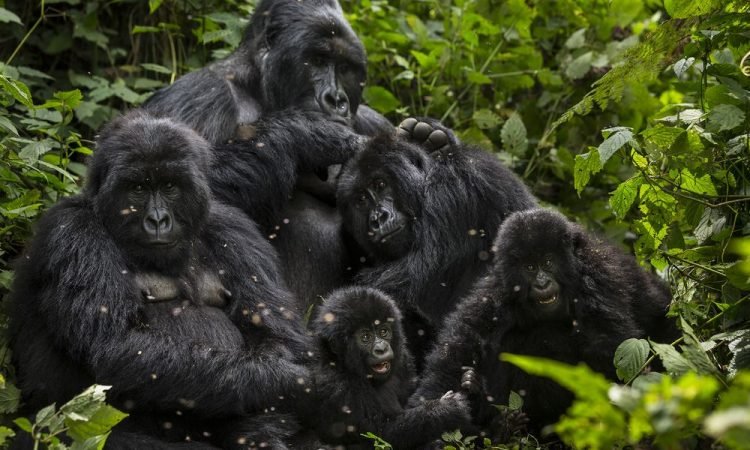
Bwindi Impenetrable Forest National Park covers an area of 331 square kilometers and is characterized by lush montane rainforest, with steep slopes and narrow valleys. The park’s diverse ecosystem supports a wide range of flora and fauna, including:
- Mountain gorillas
- Chimpanzees
- Monkeys (e.g., black-and-white colobus, L’Hoest’s monkeys)
- Birds (over 200 species)
- Butterflies (over 200 species)
Where Can You Track Golden Monkeys in Africa?
While Bwindi is famed for its mountain gorillas, intrepid travelers seeking more primate encounters can add golden monkey tracking to their adventure. These rare and playful primates inhabit the misty slopes of the Virunga Mountains, with the best opportunities for tracking found in two renowned locations:
- Mgahinga Gorilla National Park, Uganda: Nestled at the southwestern tip of Uganda, Mgahinga is the country’s prime destination for golden monkey tracking.
- Volcanoes National Park, Rwanda: Just across the border, Rwanda’s Volcanoes National Park offers another spectacular setting to observe these striking monkeys in their natural, bamboo-rich habitat.
Both parks promise an unforgettable experience, as you move through lush forests, watch the golden monkeys leap between branches, and marvel at the dynamic landscape of the Virunga range. For primate enthusiasts or those looking to extend their wildlife adventures beyond gorilla trekking, tracking golden monkeys offers a delightful and unique opportunity.
Mountain Gorilla Groups and Communication
Mountain gorillas in Bwindi Impenetrable Forest National Park live in close-knit social groups, typically consisting of about 10 individuals, although group sizes can vary widely—from just a pair to as many as 30 or more. Each group is centered around a dominant silverback, who leads and protects the members. While males usually leave their family group around the age of 11 to find or form new groups, some females also move to other groups during their lives.
The structure within these groups reflects a dynamic yet stable social order. Females begin having offspring between the ages of 10 and 12, with an interval of two to three years between births, and may raise between four and six young over their lifetimes. Males reach breeding age at around 15 years.
Communication among mountain gorillas is equally fascinating. Researchers like Dian Fossey have identified at least 25 distinct vocalizations ranging from grunts and roars to playful cries and alarm calls. Each sound serves a unique purpose—helping coordinate group movement, express reassurance, signal alarm, or maintain social bonds—all contributing to the intricate social fabric of gorilla life. With these strong social ties and sophisticated communication methods, visiting Bwindi offers not just a glimpse of rare wildlife, but a window into the complex world of one of our closest animal relatives.
Gorilla Safari Packages and Pricing for 2025
Planning your gorilla trekking adventure in 2025? Here’s what you can expect in terms of costs for various safari options—allowing you to craft a journey that fits your style and budget.
Typical Safari Package Costs:
- 1-Day Gorilla Trekking Experience: Starting at around $1,500 per person, this whirlwind adventure covers permits, guides, and meals.
- 2-Day Gorilla Safari: From approximately $1,580 per person, including an overnight stay near the park, meals, permits, and guided trekking.
- 3-Day Gorilla Tour: Expect rates from $1,610 per person. This extended trip lets you immerse yourself in both the gorilla experience and the surrounding forest life.
Luxury Treks:
For those seeking the crème de la crème of gorilla experiences, luxury safaris can range between $4,000 and $6,000 per person. Exclusive packages in Rwanda’s Volcanoes National Park—home to lodges such as Bisate Lodge and Singita Kwitonda—can run even higher, especially for longer (often 9-day) itineraries. In Uganda, high-end stays at properties like Mahogany Springs Lodge or Gorilla Forest Camp offer exceptional comfort and amenities after a day in the wild.
Budget-Friendly Options:
Travelers keeping an eye on costs can secure permits in the Democratic Republic of Congo for about $450, while Uganda’s budget permits start at $800. Affordable accommodation in Bwindi can be found from $100 per night at lodges like Bwindi Backpackers Lodge or Buhoma Community Rest Camp. Rwanda’s Hotel Muhabura is a favored choice for travelers looking to save on lodging.
Tip: Booking in the low season often unlocks added savings on packages and accommodation, letting your budget stretch further without missing any wildlife magic.
Calculating Your Gorilla Trekking Adventure Costs
One of the most common questions for travelers planning a visit to Bwindi Impenetrable Forest National Park is: How much will a gorilla trekking adventure actually cost? The answer depends on a variety of factors, but with a bit of planning, you can estimate your budget and prepare for an unforgettable safari.
Key Cost Components
Here’s a breakdown of the major expenses to help you estimate your total costs:
Gorilla Trekking Permits:
The primary cost is the trekking permit itself. In Uganda, a gorilla trekking permit is currently $800 per person. This fee not only grants you access to the park and an hour with the gorillas, but a significant portion is reinvested into conservation and supports local communities.Accommodation Packages:
Options range from budget to luxury. For most visitors, comfortable mid-range lodges are popular, and your nightly rate usually includes meals. Expect packages to bundle accommodation, meals (breakfast, lunch, and dinner), and guided activities for a convenient experience.Transportation:
Getting to Bwindi involves either a domestic flight from Entebbe or a road transfer by vehicle. Road travel is common and allows you to see more of Uganda along the way. Budget for airport transfers, in-country flights (if preferred), and daily vehicle hire if you’re exploring independently.Food and Beverages:
While many tour operators and lodges offer all-inclusive packages, independent travelers should budget around $40 per day for meals and drinks.Other Essential Expenses:
Don’t forget visa fees ($100 for an East African tourist visa, valid in Uganda, Rwanda, and Kenya), items like insect repellent and sunscreen, porter services (around $20 if you’d like assistance carrying your gear), and tipping for guides and staff.
Sample Safari Budgets
- Budget Experience: Starting from around $1,100 per person for the shortest trips (group tours and basic lodges).
- Mid-Range Adventure: Expect to spend between $1,300 and $2,000, which covers moderate comfort and additional services.
- Luxury Escapes: High-end safaris featuring top lodges and charters can range from $4,000 up to $6,000+, depending on taste and exclusivity.
Ways to Save
- Travel with Friends or Join a Group: Sharing transportation and guides reduces per-person costs.
- Book During the Low Season: Prices are generally lower, and the forest is quieter.
- Opt for Road Transfers: Skip chartered flights for a more budget-friendly—and scenic—experience.
- Select Budget Lodges: Plenty of comfortable options exist without breaking the bank.
Calculating your gorilla trekking adventure cost is all about balancing comfort, experience, and budget. Remember: every permit purchased plays an important role in conserving mountain gorillas for future generations.
Understanding Additional Permit Fees
When planning your gorilla trekking adventure, securing a gorilla permit is a crucial step—sometimes more challenging than navigating the forest’s twisting trails. Many travelers opt to have local Uganda safari operators handle the process to save time and energy. However, it’s important to be aware of potential extra costs involved.
Most tour companies charge an additional fee, typically ranging from $60 to $100 per permit, if you only need their help securing the permit without booking a full tour package. This fee covers various administrative expenses such as paperwork, coordinating with the Uganda Wildlife Authority, permit pickup, phone communications, and delivering the permit.
On the other hand, if you reserve a complete safari experience—including transportation, guiding, or accommodation—these operators often waive the permit handling fee. In such cases, the cost of obtaining the gorilla permit is generally included in your overall tour price, with no added surcharges.
A quick overview of possible extra charges:
- Standalone Gorilla Permit Booking: Expect an additional fee, usually $60–$100 per permit.
- Full Tour Reservation: The permit fee is often included, with no extra charge for the permit itself.
- Payment Logistics: You may need to factor in bank transfer fees or card processing charges, depending on your payment method.
Special Rates for East African Citizens
If you’re a citizen of an East African country, you can benefit from significantly reduced gorilla trekking permit prices. East African citizens enjoy a discounted rate of 300,000 Ugandan shillings for their permits, making this extraordinary wildlife experience much more accessible to regional travelers. This incentive is a great opportunity for locals to explore the natural wonders in their own backyard and connect with one of Africa’s most iconic species.
Don't Miss out:
Reserve your Trip Now!
Price includes :
- Accommodation
- Meals (breakfast, lunch, dinner)
- Park fees
- Guided tours
- Transportation (within the Trip)
Gorilla Trekking
Bwindi Impenetrable Forest National Park offers a unique opportunity to observe mountain gorillas in their natural habitat. Visitors can participate in guided gorilla trekking excursions, which involve hiking through the forest to locate and observe these majestic creatures.
How Challenging Is Gorilla Trekking?
While gorilla trekking in Bwindi Impenetrable Forest is an unforgettable experience, it does come with a level of physical challenge that varies from person to person. Trekking to see the mountain gorillas usually involves hiking on rugged terrain, with steep slopes, uneven paths, and occasional muddy patches—especially after a rain shower. More than half the park sits above 2,000 meters (about 6,600 feet), and you’ll quickly notice the elevated air as you make your way through the misty forest.
What Influences the Difficulty?
Several factors shape how demanding your trek will be:
- Personal Fitness: Those with a moderate level of fitness will generally find the trek accessible. Many travelers in their 60s or 70s successfully complete the trek each year, but having a bit of hiking experience or recent activity certainly helps.
- Weather: Bwindi’s weather can change rapidly. Rainy conditions can make trails slippery and more challenging, while drier seasons offer slightly easier hiking.
- Terrain and Elevation: Expect to climb hillside paths, navigate dense underbrush, and occasionally cross streams. The trekking route chosen on the day depends on where the gorilla families are, so hikes can last anywhere from 2 to 6 hours.
- Gorilla Family Location: Because the gorilla groups roam, your group may be assigned to a family that is closer or farther from the trailhead. If you have particular concerns about stamina or mobility, you can request to join a group trekking to a gorilla family that is typically found nearer to the starting point.
- Porters and Assistance: Hiring a local porter is highly recommended; they can help with your backpack and lend a steady hand on those slippery downhills, making the journey much easier regardless of your fitness level.
Despite the adventure’s reputation, gorilla trekking doesn’t require elite athleticism—just a willingness to take on a bit of a challenge and a love of nature’s wonders.
Gorilla Families to Visit
Bwindi Impenetrable Forest</Bwindi Impenetrable Forest> is divided into several trekking sectors, each home to distinct gorilla families that visitors may encounter. Depending on where your adventure begins, you may be tracking groups in one of these four main sectors:
- Ruhija Sector</Ruhija Sector>: Meet gorilla families such as Mukiza, Oruzogo, Bitukura, and Kyaguliro.
- Buhoma Sector</Buhoma Sector>: Journey to see Habinyanja, Katwe, Mubare, or Rushegura groups.
- Nkuringo Sector</Nkuringo Sector>: Trekking here introduces you to Nkuringo, Christmas, and Bushaho families.
- Rushaga Sector</Rushaga Sector>: Home to multiple families including Kutu, Bikingi, Mishaya, Bushigye, Kahungye, Rwigi, Bweza, Nshongi, and Mucunguzi.
Each family is habituated for trekking, offering a unique window into their daily routines, from foraging for food to caring for their young.
For travelers venturing to nearby Mgahinga Gorilla National Park</Mgahinga Gorilla National Park>, the Nyakagezi group awaits. This family roams across the dramatic slopes of the Virunga Volcanoes</Virunga Volcanoes>—<Mt. Muhavura>Mt. Muhavura</Mt. Muhavura>, <Mt. Gahinga>Mt. Gahinga</Mt. Gahinga>, and <Mt. Sabinyo>Mt. Sabinyo</Mt. Sabinyo>—adding a breathtaking backdrop to your primate encounter.
What to Pack: Essential Gear and Clothing for Gorilla Trekking
Gearing up for gorilla trekking in Bwindi means preparing for a mix of muddy trails, cool mist, and thick rainforest. To ensure you’re comfortable and protected throughout your adventure, consider packing the following essentials:
- Sturdy Hiking Boots: Opt for waterproof boots with good ankle support—trails can be steep and slippery.
- Layered Clothing: Mornings can be chilly, but temperatures often rise as you trek. Pack moisture-wicking base layers, a fleece or warm mid-layer, and a lightweight, rainproof jacket.
- Long-Sleeved Shirts & Trousers: These help protect against thorns, bugs, and nettles as you move through dense undergrowth.
- Gloves: A simple pair of gardening or trekking gloves will shield your hands from rough branches and vines.
- Gaiters: Knee-high gaiters help keep mud, water, and insects out of your boots.
- Rain Gear: Quick-drying jackets and pants are especially useful—the rainforest earns its name!
- Day Pack: Bring a small, comfortable backpack for water, snacks, and personal items.
- Sun Protection and Insect Repellent: High-altitude sun can be intense, so a hat, sunglasses, and sunscreen are recommended. Insect repellent will help you ward off bites.
And don’t forget your camera and binoculars—there’s so much more than gorillas to spot in this enchanting forest!
Gorilla Habituation Experience: Up-Close with Uganda’s Gentle Giants
For those seeking a deeper connection with Bwindi’s mountain gorillas, the Gorilla Habituation Experience offers an extraordinary alternative to standard trekking. Unlike a typical trek, where visitors spend a single hour observing a habituated gorilla family, this immersive adventure invites you to join a team of expert researchers and rangers as they gradually build trust with a wild gorilla group.
Only four visitors per day can participate, ensuring a highly intimate and mindful experience. Over the course of several hours, you’ll witness firsthand the gradual process by which gorillas learn to tolerate human presence—a journey that takes researchers years to accomplish. You’ll help track the gorillas through dense forest, observe social behaviors, and gain rare insights into their daily lives, all while contributing to vital conservation efforts.
This unique adventure comes at a premium, with permits for the Gorilla Habituation Experience priced at $1,500 per person per day. For wildlife enthusiasts and conservation supporters, the chance to be part of the gorillas’ journey from wildness to trust makes this a truly unforgettable way to engage with nature.
Health & Safety Guidelines for Gorilla Trekking
Given their close genetic relationship to humans—sharing an astonishing 98% of our DNA—mountain gorillas are susceptible to many of the same illnesses we face, including respiratory diseases such as COVID-19. To ensure the safety of both visitors and gorillas, the park has established strict health and safety protocols for trekking, especially in light of recent global health concerns:
- Maintain a Minimum Distance: Visitors must keep at least 7 meters (about 23 feet) away from gorillas at all times. This precaution minimizes the risk of transmitting illnesses.
- Age Restriction: Only individuals aged 15 years and above are permitted to participate in gorilla trekking, as a further measure to protect both the apes and young travelers.
- Limited Viewing Time: Encounters with gorilla families are limited to one hour, ensuring minimal disturbance to their natural behaviors and reducing prolonged exposure.
- Practice Good Hygiene: It’s important to cover your mouth and nose when coughing or sneezing and to avoid visiting if you feel unwell. Use hand sanitizer or wash your hands regularly during your visit.
- Observe Standard Operating Procedures: Adherence to all current health and safety guidelines—including mask-wearing and other government-mandated protocols—is required throughout your trek.
By following these precautionary measures, visitors help safeguard the health of these remarkable animals and ensure the sustainability of gorilla tourism for generations to come.
Best Time for Gorilla Trekking
One of the most common questions from adventurers planning their journey is: When is the ideal time to set off in search of mountain gorillas? While gorilla trekking is possible year-round in Uganda, Rwanda, and the Democratic Republic of Congo, a few seasonal tips can help you make the most of your expedition.
Generally, the dry months—June, July, August, September, and December—are considered the prime window for gorilla trekking. During this period, the forest trails tend to be less muddy, which means a safer and more manageable hike as you follow your expert guides through Bwindi’s tangled rainforest. Morning temperatures hover around a cool 11°C (52°F), with afternoons warming gently to about 23°C (73°F).
Here’s a quick guide to the seasons:
January & February: Enjoy quieter trails and smaller crowds. Rainfall is light, making trekking less challenging and quite peaceful.
March, April & May: Expect heavier rains and slippery slopes during these months. Trekking can be tougher, but the forest is especially lush, and permits are typically easier to secure.
June to September, plus December: These peak months offer drier conditions, making gorilla tracking at its most comfortable. However, permits sell out quickly—booking well in advance is essential for these sought-after dates.
No matter when you visit, every season offers a unique perspective on the rich biodiversity and captivating atmosphere of Bwindi’s ancient jungle.
Pioneers of Gorilla Research
The remarkable insights we have today into mountain gorilla behavior and ecology are rooted in the dedication of researchers such as Dian Fossey and George Schaller. Their groundbreaking work not only broadened our scientific knowledge but also inspired global conservation efforts.
Dian Fossey, whose legendary fieldwork spanned nearly two decades, immersed herself in the mountain forests, carefully observing gorilla families up close. She pioneered identification methods—such as recognizing individual gorillas by their unique nose prints—and established anti-poaching strategies that are now cornerstones of conservation. Her commitment extended beyond data collection; Fossey trained local scientists, developed rigorous research protocols, and used her compelling storytelling (“Gorillas in the Mist”) to bring the plight of these gentle giants into the international spotlight.
Before Fossey, George Schaller laid the foundation with intensive studies in the late 1950s and early 1960s. Schaller’s field observations shattered myths, revealing that gorillas are peaceful, social beings, not the fearsome creatures of legend. His influential book, “The Mountain Gorilla: Ecology and Behavior,” shifted public perception, offering the world a first real glimpse into gorilla society and setting new standards for wildlife research.
Together, these pioneers have transformed what we know about gorilla social structures, communication, and daily life—knowledge that continues to shape conservation and eco-tourism in Bwindi and beyond. Their legacy can be felt during every trek, as visitors witness gorilla families thriving in the forests, thanks in large part to the foundation these researchers built.
Gorilla Trekking Permit Costs
If you’re planning to embark on a gorilla trekking adventure, it’s important to be aware of the permit fees in the various countries where these magnificent creatures reside:
- Uganda: A standard gorilla trekking permit is priced at $800 per person for one hour with the gorillas. For those seeking a deeper experience, the Gorilla Habituation Permit—allowing extended time and observation—costs $1,500 per person.
- Rwanda: Trekking permits in Rwanda are $1,500 per person for a standard one-hour encounter.
- Democratic Republic of Congo: Gorilla trekking permits are more budget-friendly here, at $400 per person.
- East African Citizens: Residents of East African countries can access discounted rates; in Uganda, permits are available for 250,000 Ugandan shillings.
It’s recommended to book your permits well in advance, as the number of daily visitors is strictly limited to ensure a sustainable and low-impact experience.
Securing Your Gorilla Trekking Permit
If you’re dreaming of witnessing the iconic mountain gorillas up close, obtaining a gorilla trekking permit is the crucial first step. Permits are required to ensure both the safety of the gorillas and the quality of your trekking experience, and they grant you access to one of the world’s most extraordinary wildlife encounters.
Where to Get Your Permit
Gorilla trekking permits in Uganda are primarily available for Bwindi Impenetrable Forest National Park, with a limited number issued for Mgahinga Gorilla National Park. Due to the elusive nature of gorilla families in Mgahinga, most trekkers choose Bwindi, where daily permit availability is highest.
Permits are issued by the Uganda Wildlife Authority and can also be arranged through reputable tour operators or safari agencies such as Jerodi Africa Safari. Advance booking is essential, as only a set number of permits (currently 8 per gorilla family group, with approximately 72 trekkers welcomed each day in Bwindi) are available, and slots fill up quickly.
Current Pricing and Planning Tips
Permit prices are currently set at USD $800 per person per trek. Past seasonal discounts are no longer offered, so plan your budget accordingly when organizing your adventure.
Avoiding Common Pitfalls
To make the most of your trekking experience:
- Coordinate Your Permit and Accommodation: Bwindi is divided into several sectors, each with its own gorilla families. Be sure your permit matches the sector where you’ll be staying to avoid long, challenging transfers across rugged terrain.
- Use Expert Guidance: While it may be tempting to organize everything independently, the region’s tricky roads and remote locations can lead to costly detours or missed treks. Local operators and safari guides are skilled at handling logistics and will help you maximize your experience.
- Book Early: High demand means permits can sell out months in advance (especially in peak season from June to September). Secure your permit as soon as your travel dates are set.
By planning ahead and seeking guidance from trusted safari specialists, you’ll ensure a smooth journey to one of the planet’s most incredible encounters with nature.
Does a Gorilla Permit Guarantee a Sighting?
While securing a gorilla trekking permit is essential for your adventure, it does not absolutely guarantee that you will encounter gorillas during your trek. The guides are highly skilled at tracking families using the latest information from trackers and conservationists, and the likelihood of seeing gorillas is very high—about 98%. However, as with all things wild and wonderful in nature, there’s a small element of unpredictability. The thrill of the trek lies in the authentic experience: traversing lush forest landscapes and searching for these magnificent animals in their natural home.
Gorilla Habituation Experience: Permit Cost and What to Expect
For those seeking an even deeper connection with Bwindi’s mountain gorillas, the park also offers the Gorilla Habituation Experience. The permit for this adventure is $1,500 per person, granting you the rare opportunity to spend a full day in the presence of a gorilla family as they acclimate to human visitors.
Unlike standard treks, this immersive experience allows you to accompany researchers and rangers, observe gorilla behaviors up close, and gain insight into the ongoing conservation process. With more time in the forest, you’ll witness everything from playful young gorillas to the gentle leadership of a silverback—truly a once-in-a-lifetime adventure for wildlife enthusiasts.
Gorilla Habituation Experience: Permit Cost and What to Expect
For those seeking an even deeper connection with Bwindi’s mountain gorillas, the park also offers the Gorilla Habituation Experience. The permit for this adventure is $1,500 per person, granting you the rare opportunity to spend a full day in the presence of a gorilla family as they acclimate to human visitors.
Unlike standard treks, this immersive experience allows you to accompany researchers and rangers, observe gorilla behaviors up close, and gain insight into the ongoing conservation process. With more time in the forest, you’ll witness everything from playful young gorillas to the gentle leadership of a silverback—truly a once-in-a-lifetime adventure for wildlife enthusiasts.
Comparing Gorilla Permit Prices and Experiences: Uganda, Rwanda, and Congo
For those considering a gorilla trekking adventure, one of the biggest questions is how permit costs and overall experiences stack up across Uganda, Rwanda, and the Democratic Republic of Congo (DRC). Each destination offers its own unique scenery, atmosphere, and price points—but all three promise the unforgettable thrill of close encounters with mountain gorillas.
Permit Costs at a Glance
- Uganda: Gorilla trekking permits are priced at approximately $800 per person. This fee includes entry into places like Bwindi Impenetrable Forest National Park and covers one hour spent with a gorilla family group (typically in groups of up to eight visitors).
- Rwanda: Rwanda’s Volcanoes National Park sets the permit cost at $1,500 per person—the highest in the region. The experience is highly polished, with some of the region’s most luxurious lodges for those seeking comfort and exclusivity.
- Congo (DRC): For budget-conscious travelers or adventure seekers, gorilla trekking permits in Virunga National Park are the most affordable at around $450 per person. While infrastructure is more basic and travel logistics can be more challenging, Congo remains a favorite for seasoned explorers.
What’s Included—and What’s Unique
Regardless of the country you choose, a gorilla permit provides access to a once-in-a-lifetime experience: hiking through lush forests, guided by expert trackers, and spending a magical hour in the presence of these endangered giants.
- Uganda stands out for biodiversity. In addition to gorillas, visitors can tack on chimpanzee tracking in Kibale Forest, or embark on a classic safari in Queen Elizabeth or Murchison Falls National Park—making it a top pick for those who want to see more than just gorillas.
- Rwanda features shorter trek times to gorilla families and a well-established, conservation-focused program. The high permit price also contributes significantly to local community projects and gorilla conservation efforts.
- Congo (DRC) offers rugged adventure and the chance to experience a much less visited gorilla habitat, though travel advisories and park accessibility should always be checked before booking.
How Many Permits are Available?
Strict controls protect these remarkable animals and ensure sustainable tourism. In Uganda, for example, only 80 visitor permits are issued daily—helping to safeguard the gorillas and limit human impact on their habitat. This approach is mirrored by authorities in Rwanda and the DRC, making advance booking essential (especially during the dry season).
The Conservation Impact
No matter which country you choose, your permit purchase is a direct investment in mountain gorilla conservation and in supporting local communities surrounding these national parks. It’s a meaningful way for travelers to turn an extraordinary wildlife encounter into a lasting legacy for future generations.
Deciding when to embark on your gorilla trekking experience can make a big difference in both your journey and your budget. While Bwindi Impenetrable Forest National Park welcomes visitors year-round, the timing of your trip will shape what you encounter in the forest—and what you pay for your adventure.
Peak Season (June–September, December): The months of June through September and December are considered the peak trekking season. During this time, the weather is drier, trails are less slippery, and forest hikes are generally more manageable for all fitness levels. Because these favorable conditions also attract a larger number of travelers, gorilla trekking permits tend to sell out quickly—so booking well in advance is a must. Prices for tours and lodgings are usually at their highest, reflecting the strong demand. However, the reward is well worth it: plenty of clear days, greater visibility in the forest, and a festive atmosphere as trekkers from all corners of the globe unite for a once-in-a-lifetime experience.
Low Season (March–May, October–November, January–February): If you crave more solitude on the trails—and possibly a gentler hit to your wallet—consider trekking during the low season. March to May and again from October to November are typically wetter months. Rainfall can make trails muddy and challenging, turning the trek into more of an adventure. Yet, fewer visitors mean quieter forests, greater chances of intimate gorilla encounters, and the possibility of snagging discounts on permits, accommodations, and bundled tours. Some tour operators adjust their rates to attract visitors during these rainier months, and the park itself is peaceful, with less foot traffic.
Cost Considerations: Gorilla trekking prices generally start around $1,100 for a basic one-day excursion in Uganda, with multi-day packages (like 2-day or 3-day tours) scaling up from there—often between $1,280 and $1,450. Super-luxury experiences, with top-tier lodges and exclusive guiding, can range upward from $4,000–$6,000 per person. Opting for mid-range experiences, especially in the low season, is a popular choice among travelers looking to balance comfort and cost.
In short:
- Peak season offers better weather and easier trekking but comes with higher prices and crowds.
- Low season brings lush scenery, discounted rates, and a more serene experience, offset by more challenging trails due to rain.
No matter when you visit, every trek supports conservation and community efforts—the true heart of the Bwindi experience.
Are Mountain Gorillas Dangerous?
A common question from visitors is whether mountain gorillas pose a danger to humans. Despite their impressive strength and size, mountain gorillas are surprisingly gentle and shy by nature. The gorilla families encountered during treks in Bwindi have undergone a careful habituation process—spanning up to two years—during which they become accustomed to the presence of humans. This process is overseen by conservationists and ensures that gorillas remain calm and non-aggressive during controlled visits.
It’s important to remember that these magnificent creatures are still wild animals and will defend themselves if they feel threatened, particularly when it comes to protecting their young. However, incidents of aggression toward humans are extremely rare, especially when visitors closely follow the guidance of experienced park rangers. Rangers play a vital role not only in your safety but also in the well-being of the gorillas, maintaining a respectful distance and adhering to strict protocols during every trek.
Gorillas may display dominance within their groups or during encounters with rival groups, sometimes resulting in displays or even confrontations between silverbacks. These behaviors are a natural part of gorilla society and are monitored by rangers to ensure both visitor and animal safety. By respecting the rules and the expertise of your guides, you’ll enjoy a safe, awe-inspiring experience observing mountain gorillas in their natural home.
Gorilla Permit Allocation: What You Need to Know
Gorilla trekking in Bwindi is a highly sought-after adventure, so securing a permit is a key part of planning your visit. Most permits are initially purchased in bulk by tour operators—specifically, members of the Association of Uganda Tour Operators (AUTO), who often reserve up to 80% of the available permits as much as two years in advance. This helps ensure organized group trips have guaranteed access to the trekking experience.
If you’re traveling independently or booking outside of these tour groups, you still have options. Individual travelers and those not affiliated with AUTO can obtain up to two permits per month, with bookings opening three months ahead of your planned trek. These reservations go live on the first working day of each month, so it pays to be organized and ready to book as soon as possible.
Permits that remain unclaimed after the initial booking rush are released for general sale the following day, allowing anyone—whether a tour operator or individual—to purchase without restriction. This system helps balance access between larger groups and solo adventurers, making the unforgettable experience of meeting mountain gorillas accessible to all.
Reserving Your Gorilla Trekking Permit
Securing a gorilla trekking permit through a local tour operator is a straightforward process designed to ensure your adventure is seamless and stress-free.
Here’s how it typically works:
- Choose Your Dates: Provide your preferred travel dates, along with the specific day you’d like to trek with the gorillas.
- Availability Confirmation: The tour operator will confirm if permits are available on your chosen dates and, if so, place a temporary reservation while you complete the next steps.
- Payment Arrangements: You’ll receive secure payment details from the operator. Choose your preferred method—most accept bank transfer or major credit cards—and be sure to account for any bank charges involved in the process.
- Booking Confirmation: After your payment is received, you’ll get an official confirmation of your reservation from the operator.
- Document Submission: To complete the permit application, provide a scanned copy of your passport or the required details (such as your full name, nationality, and passport number).
- Permit Issuance: The operator will register your details with Uganda Wildlife Authority and secure your gorilla permit. Permit fees are charged at cost when booking your tour; any minor additional costs may apply for administrative services such as paperwork or telecommunication.
It’s important to note that while holding a permit offers an excellent opportunity to see the gorillas (success rates are around 98%), encounters can’t be absolutely guaranteed, as these are truly wild animals in a natural setting.
Luxury vs. Budget Gorilla Trekking Tours
Gorilla trekking experiences can vary significantly depending on your preferences and budget. If you’re seeking the highest level of comfort and exclusivity, luxury tours deliver just that. In Rwanda’s renowned Volcanoes National Park, luxury gorilla safaris typically feature exquisite accommodations at lodges like Bisate Lodge, Singita Kwitonda Lodge, or Sabyinyo Silverback Lodge. These top-tier experiences come with personalized service, gourmet cuisine, and plush amenities—expect to pay a premium, with permits priced around $1,500 per person and multi-day itineraries often exceeding $15,000.
On the other hand, budget-friendly gorilla trekking options make this incredible adventure more accessible. The Democratic Republic of Congo offers the most affordable permits—about $450—while Uganda’s permits are around $800. For those watching their expenses, places like Bwindi Backpackers Lodge, Gorilla Valley Lodge, Buhoma Community Rest Camp in Uganda, or Hotel Muhabura in Rwanda provide basic, comfortable accommodation, generally starting from $100 per night. These trips still offer the awe-inspiring experience of observing mountain gorillas, but with fewer frills.
No matter which style you choose, gorilla trekking remains a once-in-a-lifetime chance to witness these remarkable creatures up close, surrounded by the wild beauty of Africa’s ancient forests.
Choosing the Right Gorilla Safari Tour Company
Selecting the ideal tour company for your gorilla trekking adventure is essential for a seamless and memorable experience. Here are a few key factors to keep in mind:
- Gorilla Permit Availability: Ensure the company can secure your gorilla trekking permit for your preferred dates—permits are limited and often sell out months in advance.
- Reputation and Reviews: Look up recent traveler reviews on trusted sites like TripAdvisor or SafariBookings to gauge reliability, service quality, and overall guest satisfaction.
- Experience and Local Knowledge: Experienced operators with a good track record offer knowledgeable guides, well-organized itineraries, and insightful commentary on the flora, fauna, and local culture.
- Transparency and Inclusions: Confirm what’s included in your safari package—accommodation, meals, transport, park fees, and additional activities should be clearly listed to avoid any surprises.
- Safety Standards: Opt for companies that prioritize guest safety, with well-maintained vehicles and accurate information about the trekking conditions.
- Sustainable Practices: Choose an operator that supports conservation and local communities by upholding responsible tourism principles—this helps preserve Bwindi’s unique ecosystem for future generations.
Taking the time to research these aspects ensures your gorilla trekking journey exceeds expectations—both for you and the incredible wildlife you’ve come to see.
What You’ll Need for Your Gorilla Permit
To secure your gorilla trekking permit, you’ll need to provide some essential details when booking:
- Full name (as it appears on your passport)
- Nationality
- Passport number
It’s a straightforward process—just ensure you have a clear scan or photo of your passport ready, as this information is used for official registration and to guarantee your spot on this unforgettable excursion.
Gorilla Tracking in Rwanda
For those interested in gorilla tracking beyond Uganda, neighboring Rwanda offers an equally captivating experience. Gorilla trekking in Rwanda takes place in Volcanoes National Park, nestled among the scenic Virunga Mountains. Here, adventurers can trek through lush landscapes in search of the park’s resident mountain gorilla families.
Permits for gorilla tracking in Volcanoes National Park are required and currently cost $1,500 per person. Rwanda is home to several habituated gorilla families, providing visitors with an unforgettable glimpse into the lives of these remarkable primates.
The best months for gorilla trekking in Rwanda are typically late June through August, when the weather is generally dry and the forest trails more accessible.
Why Book Gorilla Permits Through Safari Operators?
Planning a gorilla trekking adventure in Bwindi can feel daunting for many travelers, especially when it comes to securing those highly coveted permits. That’s where experienced Uganda safari operators step in to make things easier. Many visitors choose to book their gorilla permits through these tour companies for a simple reason: convenience.
Tour operators handle all the paperwork—from contacting park authorities to collecting the permits and ensuring they’re ready for your trek. While there’s typically an additional service fee (often between $60 and $100 per permit), the time saved and peace of mind can be well worth it, especially if you’re already booking a multi-day tour or arranging transportation with the operator. In many cases, if you’re booking a complete safari package with a trusted company like Jerodi Africa Safari, you’ll find the permit costs rolled right into your overall adventure—no surprise charges.
For travelers who value efficiency and want to avoid long waits or complicated logistics, letting a reputable operator manage your permit is a stress-free way to guarantee your place with the mountain gorillas.
Other Activities
In addition to gorilla trekking, visitors can:
– Hike to the park’s highest point, Rwamunyonyi Hill
– Explore the park’s diverse birdlife
– Take a nature walk through the forest
– Learn about the park’s conservation efforts
Wildlife in Queen Elizabeth National Park
While Bwindi is famed for its mountain gorillas, Queen Elizabeth National Park—another jewel in Uganda’s crown—offers its own spectacular array of wildlife. Visitors can spot several species of primates, including baboons, vervet monkeys, red-tailed monkeys, and the ever-charming colobus monkeys. But the wonders don’t stop there.
Queen Elizabeth is also home to the famous tree-climbing lions of Ishasha, massive herds of buffaloes and elephants, elusive leopards, pods of hippos, and an impressive gathering of antelope species. Bird enthusiasts will be delighted by the park’s remarkable avian diversity, with hundreds of bird species to observe along the shores of the Kazinga Channel and throughout the savannah. Whether you’re seeking iconic African mammals or rare birds, Queen Elizabeth National Park is the perfect addition to your Ugandan adventure. Get Your Free Quote Now
Chimpanzee Trekking: Queen Elizabeth vs. Kibale Forest National Park
While Bwindi is celebrated for its mountain gorillas, Uganda also offers thrilling chimpanzee trekking experiences in two remarkable parks: Queen Elizabeth National Park and Kibale Forest National Park. Both destinations promise close encounters with our fascinating primate cousins, but each has its own unique flavor.
Queen Elizabeth National Park: Kyambura Gorge Chimpanzee Excursion
Nestled within the spectacular Queen Elizabeth National Park lies the Kyambura Gorge, a lush, sun-dappled ravine famously known as the “Valley of Apes.” Here, guided chimpanzee treks take adventurers deep into the forest in search of the resident chimps. The trek itself is moderately strenuous, involving narrow trails, some steep climbs, and plenty of opportunities to spot baboons, colobus monkeys, and red-tailed monkeys along the way.
– Permits: Only 16 permits are available per day, so advance booking is essential. – Age Requirement: Participants must be at least 12 years old. – Duration: The trek typically lasts about 3 hours, though the time may vary based on the chimps’ location and your fitness level. – Cost: Permits for this experience are generally more affordable than some other sites.
Kyambura’s dense forest and dramatic landscape make for an adventurous, immersive journey—so prepare for a little mud and a lot of memories!
Kibale Forest National Park: The Primate Capital
For visitors looking for a classic chimpanzee encounter, Kibale Forest National Park stands out as Uganda’s premier chimp trekking destination. Dubbed the “primate capital of Africa,” Kibale boasts a thriving population of chimps and an impressive cast of twelve other primate species. Guided treks begin at Kanyanchu, with multiple departures throughout the day.
– Permits: Kibale issues more permits daily, so availability is generally easier, but demand remains high. – Chimpanzee Habituation: For an even deeper experience, try the Chimpanzee Habituation Experience, where you can spend extended time observing researchers and their efforts. – Duration: Standard treks run from 8 a.m. To 2 p.m., offering flexibility. – Cost: Permits here are higher-priced, reflecting the park’s prolific chimp population and well-established guiding infrastructure.
Kibale is renowned for its accessibility, high success rate of chimps sightings, and extensive biodiversity—making it a must for enthusiasts keen on a dynamic, wildlife-rich adventure.
Whether you trek through Kyambura’s dramatic gorge or explore Kibale’s verdant trails, chimpanzee tracking is an unforgettable highlight of any Ugandan adventure. Both parks offer something special, from breathtaking scenery to heart-pounding primate encounters.
Conservation Efforts
Bwindi Impenetrable Forest National Park is committed to conservation and sustainable tourism practices. The park’s conservation efforts focus on:
- Protecting the mountain gorilla population and their habitat
- Supporting local communities through tourism revenue and community-based projects
- Promoting sustainable forest management and biodiversity conservation
Conservation Status of the Mountain Gorilla
According to the International Union for Conservation of Nature (IUCN) Red List, mountain gorillas are currently classified as endangered. This status underscores the critical importance of ongoing protection and conservation measures to ensure their survival for future generations. Continued efforts are needed to safeguard these remarkable animals and the unique ecosystem they call home.
Mountain Gorilla Population: A Conservation Success Story
The story of the mountain gorilla is one of resilience and hope. In the early 1980s, the global population of these gentle giants had plummeted to fewer than 260, putting them on the brink of extinction. Thanks to persistent conservation work—much of it inspired by pioneering researchers like Dian Fossey—protective measures, community involvement, and consistent research protocols have driven a remarkable turnaround.
Today, the mountain gorilla population has grown to over 1,000 individuals worldwide. This rebound is a testament to decades of hard work by conservationists, local communities, and international organizations. Visitors trekking through Bwindi Impenetrable Forest National Park not only have the chance to witness these extraordinary animals but also contribute directly to the continued success of their conservation.
Organizations Supporting Gorilla Conservation
Several internationally recognized organizations are actively engaged in the ongoing conservation of mountain gorillas across Africa. Their collaborative efforts focus on habitat preservation, research, anti-poaching activities, and community-based initiatives to secure the future of these incredible primates.
Notable contributors include:
- The Dian Fossey Gorilla Fund International: Dedicated to protecting gorillas and their habitats through research, education, and direct on-the-ground conservation.
- The International Gorilla Conservation Programme: Working across Uganda, Rwanda, and the Democratic Republic of Congo, this partnership strengthens cooperation between governments and local communities to address threats like poaching and habitat destruction.
- African Wildlife Foundation: Supporting wildlife conservation through habitat protection, community engagement, and sustainable tourism.
- Fauna & Flora International: Collaborating with governments and communities to safeguard critical gorilla habitats and promote long-term conservation solutions.
These efforts, alongside those of local authorities and rangers within Bwindi Impenetrable Forest National Park, make a significant impact in protecting mountain gorillas for generations to come.
Community-Based Conservation Across Borders
Community-driven efforts to protect mountain gorillas are actively taking place in Uganda, Rwanda, and the Democratic Republic of Congo. These initiatives unite local people to help safeguard the gorillas’ forest homes, reduce poaching, and ensure the survival of this endangered species. By involving communities throughout the region, long-term conservation goals become possible—not just in Uganda, but right across the gorillas’ natural range.
Dian Fossey’s Lasting Legacy
One of the most influential figures in mountain gorilla conservation was Dian Fossey, whose tireless work continues to shape our understanding and protection of these gentle giants. Beginning her groundbreaking research in Rwanda in 1967, Fossey not only established the iconic Karisoke Research Center but also pioneered anti-poaching strategies that set the standard for modern conservation.
Through years of dedicated fieldwork, Fossey developed innovative methods for recognizing individual gorillas—most notably by studying their unique nose prints—which enabled more accurate tracking and monitoring. Her careful observation and documentation of gorilla behavior, communication, and social structures gave the scientific community invaluable insights into the species’ complex lives.
Beyond research, Fossey’s commitment extended to empowering local communities and fostering the next generation of conservationists. She trained local staff and established research protocols that are still the backbone of field studies today. Her storytelling—immortalized in her classic book “Gorillas in the Mist” and brought to international attention through various media—captured hearts worldwide and ignited global efforts to protect mountain gorillas.
Fossey’s legacy is visible not only in the scientific advances she spearheaded but in the remarkable recovery of mountain gorilla populations, which have grown significantly since her era. Her dedication ultimately cost her life, as she was tragically killed in 1985 while continuing to defend gorillas from poaching. Today, the spirit of her work lives on in every conservation effort and in the thriving families of mountain gorillas she devoted her life to protecting.
Dian Fossey’s Lasting Legacy
One of the most influential figures in mountain gorilla conservation was Dian Fossey, whose tireless work continues to shape our understanding and protection of these gentle giants. Beginning her groundbreaking research in Rwanda in 1967, Fossey not only established the iconic Karisoke Research Center but also pioneered anti-poaching strategies that set the standard for modern conservation.
Through years of dedicated fieldwork, Fossey developed innovative methods for recognizing individual gorillas—most notably by studying their unique nose prints—which enabled more accurate tracking and monitoring. Her careful observation and documentation of gorilla behavior, communication, and social structures gave the scientific community invaluable insights into the species’ complex lives.
Beyond research, Fossey’s commitment extended to empowering local communities and fostering the next generation of conservationists. She trained local staff and established research protocols that are still the backbone of field studies today. Her storytelling—immortalized in her classic book “Gorillas in the Mist” and brought to international attention through various media—captured hearts worldwide and ignited global efforts to protect mountain gorillas.
Fossey’s legacy is visible not only in the scientific advances she spearheaded but in the remarkable recovery of mountain gorilla populations, which have grown significantly since her era. Her dedication ultimately cost her life, as she was tragically killed in 1985 while continuing to defend gorillas from poaching. Today, the spirit of her work lives on in every conservation effort and in the thriving families of mountain gorillas she devoted her life to protecting.
Pioneers and Champions of Mountain Gorilla Conservation
Mountain gorilla conservation owes much of its progress to passionate individuals whose groundbreaking work has changed the way we understand and protect these remarkable animals. Beyond Bwindi’s local rangers and researchers, several global figures have shaped gorilla conservation into what it is today:
Dian Fossey: Often hailed as the matriarch of gorilla conservation, Dian Fossey dedicated nearly two decades to studying gorillas in the wild, primarily in Rwanda. Her fieldwork shed light on gorilla social structures and behaviors, and her relentless advocacy played a critical role in combating poaching. Fossey’s efforts reached a global audience through her book, Gorillas in the Mist, inspiring generations of conservationists.
George Schaller: One of the earliest pioneers, George Schaller’s in-depth studies in the Virunga Mountains during the late 1950s revealed the gentle nature of gorillas, challenging prevailing misconceptions. His work established scientific methods still used in primatology, and he is widely credited with raising early awareness about the need to protect these primates.
Eugène Rutagarama: During a time of upheaval in Rwanda, Eugène Rutagarama risked his life to safeguard mountain gorillas. His commitment to conservation during conflict paved the way for renewed efforts to protect gorillas and restore critical habitats.
Paul Matschie: Dating back to the early 20th century, German zoologist Paul Matschie made a lasting mark by formally identifying the mountain gorilla as a distinct subspecies. His taxonomic work provided the scientific community with a strong foundation for future research and conservation planning.
Each of these trailblazers contributed to the preservation and understanding of mountain gorillas, ensuring their survival for generations to come. Their legacy lives on in ongoing research, conservation action, and the awe-inspiring encounters that draw travelers from around the world.
The Karisoke Research Center: Pioneering Gorilla Conservation
While Bwindi is renowned for its vital role in protecting mountain gorillas, the story of their survival stretches across borders. One of the most influential centers in gorilla conservation is the Karisoke Research Center in Rwanda, established by the legendary primatologist Dian Fossey. This center has played a monumental role in changing the fate of mountain gorillas worldwide.
Fossey’s groundwork at Karisoke laid the foundation for modern gorilla research and anti-poaching efforts. By meticulously studying the behavior and social structures of gorilla groups, she introduced innovative techniques—like identifying individual gorillas by their unique nose prints—and developed strategies that are still at the heart of gorilla protection today. Importantly, the Karisoke Research Center became a training ground for local scientists and conservationists, fostering an enduring legacy of knowledge-sharing and community involvement.
Thanks in part to the research and awareness sparked at Karisoke, the mountain gorilla population has made an inspiring recovery from the brink of extinction. The center continues to be a beacon for wildlife research and a symbol of how dedicated conservation efforts can change the course of history for an entire species.
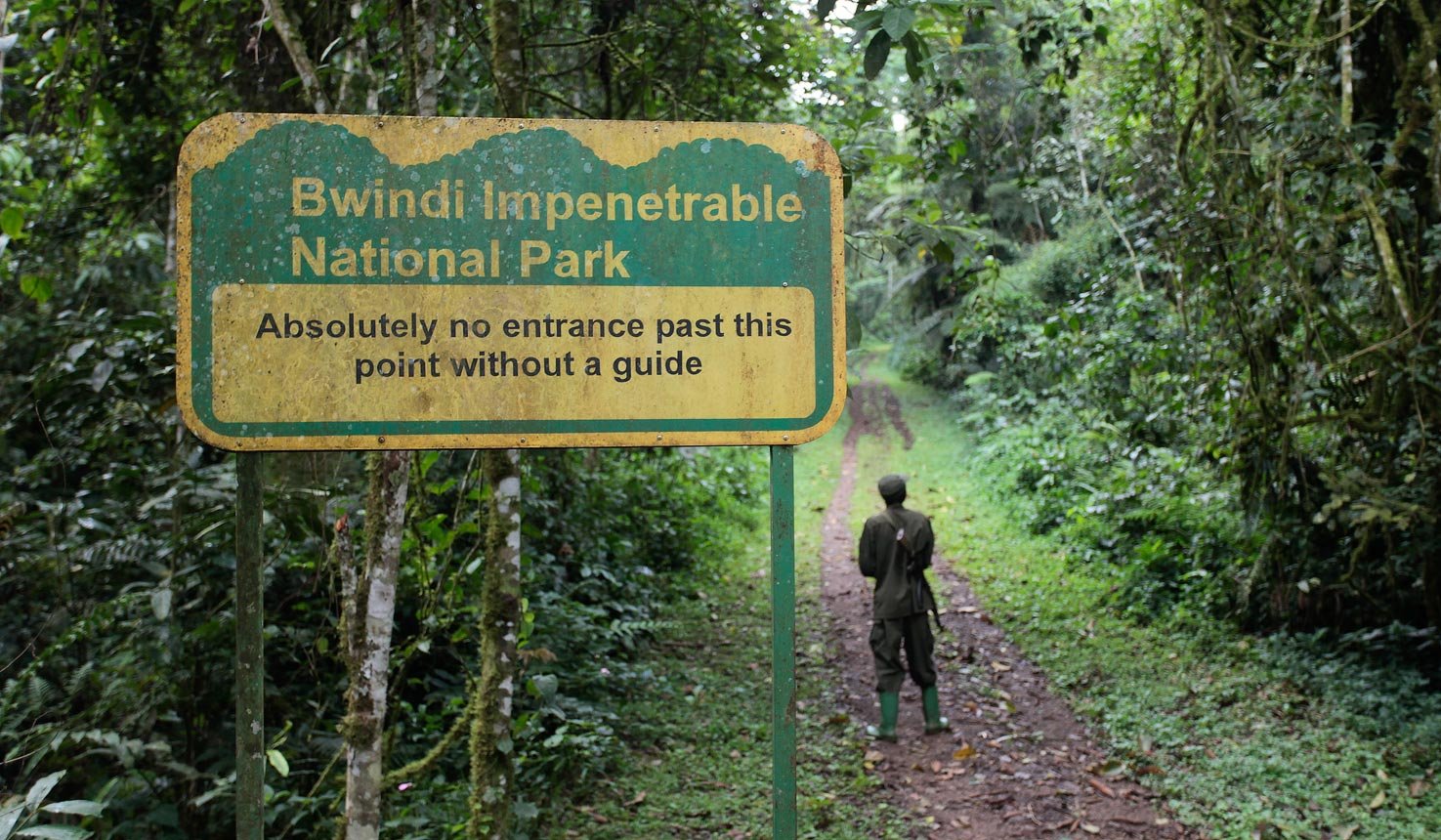
Plan Your Visit
Bwindi Impenetrable Forest National Park is a must-visit destination for nature lovers and adventure seekers. With its stunning natural beauty, diverse wildlife, and unique gorilla trekking experiences, the park offers an unforgettable experience.
Best Time to Visit Volcanoes National Park
If you’re planning to witness mountain gorillas in Volcanoes National Park, timing your adventure is key to the best experience. The most favorable months to visit are June, July, and August, when Rwanda enjoys its dry season. During this period, forest trails are less muddy, making gorilla trekking more comfortable and rewarding.
With 17 habituated gorilla families residing in Volcanoes National Park, visitors have numerous opportunities for unforgettable encounters. Whether you’re navigating lush bamboo forests or exploring volcanic slopes, the dry season ensures clear views and easier trekking conditions. For those eager to make the most of their gorilla safari, planning a visit during the mid-year dry spell can make all the difference.
